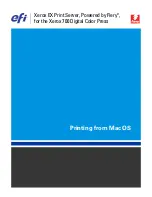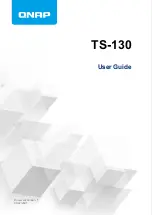
XWEB 3000 – rel.1.3–
A
A
p
p
p
p
e
e
n
n
d
d
i
i
x
x
B
B
:
:
G
G
L
L
O
O
S
S
S
S
A
A
R
R
Y
Y
1
10Base2
- Ethernet specification for thin coaxial cable, transmits signals at 10 Mbps (megabits per
second) with a distance limit of 185 meters per segment.
10Base5
- Ethernet specification for thick coaxial cable, transmits signals at 10 Mbps (megabits per
second) with a distance limit of 500 meters per segment.
10BaseF
- Ethernet specification for fiber optic cable, transmits signals at 10 Mbps (megabits per
second) with a distance limit of 2000 meters per segment.
10BaseT
- Ethernet specification for unshielded twisted pair cable (category 3, 4, or 5), transmits
signals at 10 Mbps (megabits per second) with a distance limit of 100 meters per segment.
100BaseT
- Ethernet specification for unshielded twisted pair cabling that is used to transmit data at
100 Mbps (megabits per second) with a distance limit of 100 meters per segment.
1000BaseTX
-Ethernet specification for unshielded twisted pair cabling that is used to trasmit data at 1
Gbps (gigabits per second) with a distance limitation of 220 meters per segment.
A
Asynchronous Transfer Mode (ATM)
- A network protocol that transmits data at a speed of 155
Mbps and higher. It is most often used to interconnect two or more local area networks.
AppleTalk
- Apple Computer's network protocol originally designed to run over LocalTalk networks,
but can also run on Ethernet and Token Ring.
B
Backbone
- A cable to which multiple nodes or workstations are attached.
Bit
- Binary digit in the binary numbering system. Its value can be 0 or 1. In an 8-bit character scheme,
it takes 8 bits to make a byte (character) of data.
BNC Connector
(Bayone-Neill-Concelman) - Standard connector used to connect 10Base2 coaxial
cable.
Bridge
- Devices that connect and pass packets between two network segments that use the same
communications protocol.
C
Cable
- Transmission medium of copper wire or optical fiber wrapped in a protective cover.
Client/Server
- A networking system in which one or more file servers (Server) provide services; such
as network management, application and centralized data storage for workstations (Clients).
CSMA/CD
- Carrier Sense Multiple Access Collision Detection is a network access method in which
devices that are ready to transmit data first check the channel for a carrier. If no carrier is sensed, a
device can transmit. If two devices transmit at once, a collision occurs and each computer backs off
and waits a random amount of time before attempting to retransmit. This is the access method used
by Ethernet.
Coaxial Cable
- Cable consisting of a single copper conductor in the center surrounded by a plastic
layer for insulation and a braided metal outer shield.
Concentrator
- A device that provides a central connection point for cables from workstations,
servers, and peripherals. Most concentrators contain the ability to amplify the electrical signal they
receive.
E
- An electronic mail message sent from a host computer to a remote computer.
100/111
1592010600
End User
- Refers to the human executing applications on the workstation.












































